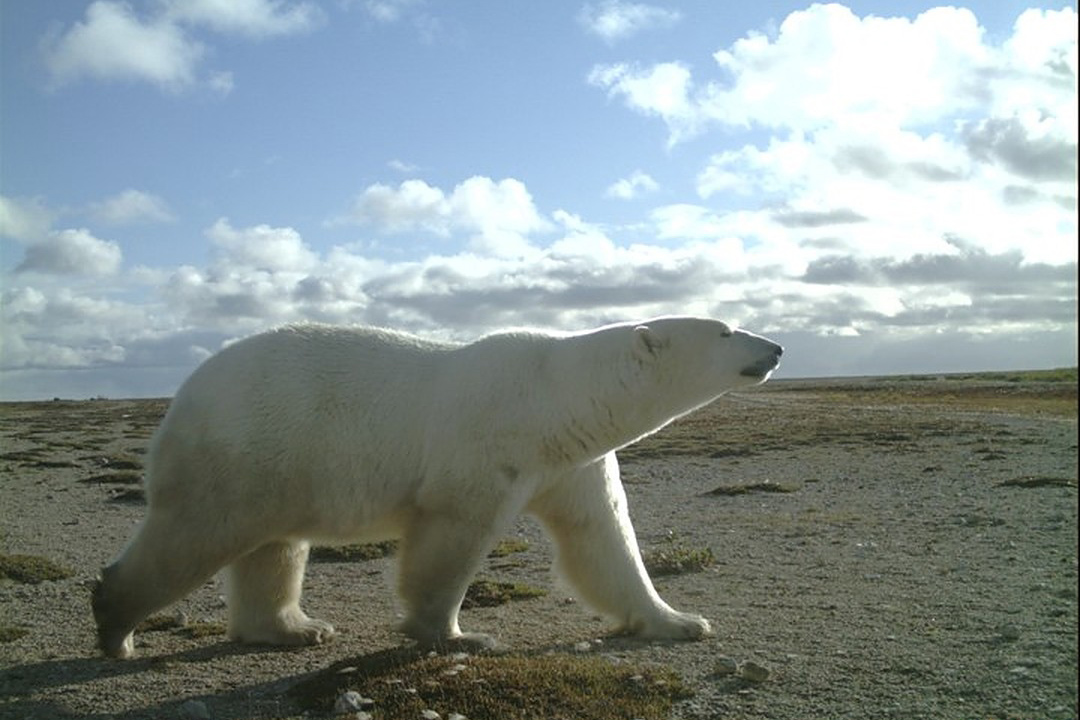
Calling all citizen scientists: help classify polar bears
SASKATOON – University of Saskatchewan (USask) researcher Doug Clark is launching a first-of-its-kind research project that will engage citizen volunteers to help advance knowledge about polar bear behaviour by analyzing a decade’s worth of images captured by trail cameras at Wapusk National Park in northern Manitoba.
By Sarath Peiris and USask Research Profile and Impact“This is a totally different way to do polar bear research,” said Clark, an associate professor at USask’s School of Environment and Sustainability. “It’s non-invasive, it involves the public for the first time, and it’s being done in a way that can carry on through the pandemic without endangering anyone in northern communities.”
Non-invasive research also is of considerable interest to northerners because it’s not stressful for animals, he said.
Clark is collaborating with Oxford University penguinologist Tom Hart on the project, which will be run on Zooniverse—a “people-powered” online platform that has more than two million volunteers worldwide who assist researchers in almost every discipline to sort and organize data.
Hart has been using Zooniverse to help with his Antarctic Penguin Watch and Seabird Watch projects. He’s helping Clark and his students to set up the polar bear project by aggregating and uploading data, and will work with Clark on the analysis. (The platform gets institutional support from Oxford University and the Adler Planetarium, and receives grants from a variety of sources.)
“This allows people, who might otherwise just passively consume images on TV and social media, to participate in polar bear research and understand how these bears are interacting with people and other wildlife in what we know is a rapidly changing environment,” said Clark.
The volunteers are supplied with a field guide and asked to count the number of bears in photos, their gender, cubs, body condition and other factors, choosing from provided options. Beta testing with more than 60 volunteers showed the process works well. The photos will be uploaded in tranches over the coming months, allowing volunteers to work through one batch before moving on to the next.
“Volunteers can help us process data in ways that are incredibly labour-intensive, which otherwise would take us and our students years to do. Frankly, Zooniverse produces more robust data and more robust analyses than if we were tiredly flipping through photos on our own.”
The project will be launched Feb. 27, on International Polar Bear Day.

The research project began in 2011 when Clark was asked by Parks Canada to find out if the field camps it established in Wapusk attracted or repelled polar bears—a question that still hasn’t been conclusively answered.
Other questions his team is trying to answer are:
- What are the drivers of polar bear visits to human infrastructure/activity? (i.e. is it environmental, is it a result of a lack of sea ice/nutritional stress, or is it a response to human activity?)
- Are there changes over time in where/when polar bears, and all the other Arctic and boreal species seen in the photos, are observed?
Researchers have installed five non-invasive trail cameras at each of three field camp sites, and eight more at the Churchill Northern Studies Centre that operate year round, and have captured more than 600 discrete polar bear observations over 10 years, along with images of other species such as wolf, caribou, grizzly bears, moose, Arctic and red foxes, and even occasional wolverines.
The four sites are along the Hudson Bay coast and are separated by almost 200 kilometres, across the ecological boundary between boreal forest and tundra providing invaluable data on multiple species in a changing environment.
Ryan Brook, an associate professor in USask’s College of Agriculture and Bioresources, is taking advantage of the lucky “by-catch” of Clark’s project—the images of caribou and wolves—to conduct research on these species, especially caribou populations, at a time of Arctic warming and changing weather patterns.
Find out more about The Arctic Bears Project by clicking here.
-30-
For more information, contact:
Victoria Dinh
USask Media Relations
306-966-5487
victoria.dinh@usask.ca

